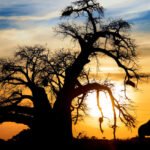Tanzania is a land of unparalleled beauty and adventure, offering an irresistible combination of the world’s tallest free-standing mountain and some of the most iconic wildlife experiences. Combining a Kilimanjaro climb with a Tanzania safari is the ultimate adventure for thrill-seekers and nature lovers alike. This guide will help you plan an unforgettable journey that blends the thrill of climbing Kilimanjaro with the awe-inspiring experience of a Tanzanian safari.
Why Combine a Kilimanjaro Climb with a Tanzania Safari?
1. Maximize Your Adventure
Climbing Kilimanjaro is a bucket-list challenge that tests your limits and rewards you with breathtaking views from Uhuru Peak. Following this achievement with a safari in Tanzania allows you to unwind and enjoy the diverse wildlife and stunning landscapes.
2. Diverse Experiences
Tanzania offers an array of experiences, from the arid plains of the Serengeti to the lush landscapes of the Ngorongoro Crater. Combining a Kilimanjaro climb with a safari provides a holistic view of Tanzania’s natural beauty and cultural richness.
3. Efficient Use of Time and Resources
Combining these two adventures in one trip is cost-effective and time-efficient. With careful planning, you can seamlessly transition from the exhilaration of a mountain climb to the relaxation of a safari.
Planning Your Combined Kilimanjaro Climb and Safari
1. Choosing the Right Time
- Best Time for Climbing Kilimanjaro: The best months for a Kilimanjaro climb are January to March and June to October. These periods offer the best weather conditions for a successful ascent.
- Best Time for a Tanzania Safari: The dry seasons from June to October and January to February are ideal for wildlife viewing. The Great Migration in the Serengeti is a highlight during this time.
2. Selecting the Climbing Route
Choosing the right route for your Kilimanjaro climb is crucial for success and enjoyment. Popular routes include:
- Machame Route: Known for its scenic beauty and higher success rate.
- Lemosho Route: Offers a longer trek with stunning landscapes.
- Marangu Route: Known as the “Coca-Cola” route, it’s a shorter and more comfortable option.
- Rongai Route: Approaches from the north and is less crowded.
- Umbwe Route: The shortest and steepest route, recommended for experienced climbers.
- Northern Circuit: The longest route, offering excellent acclimatization.
3. Planning Your Safari
Tanzania boasts several renowned national parks and conservation areas. Consider these options for your safari:
- Serengeti National Park: Famous for the Great Migration and abundant wildlife.
- Ngorongoro Crater: A UNESCO World Heritage site with diverse wildlife and stunning scenery.
- Tarangire National Park: Known for its large elephant herds and baobab trees.
- Lake Manyara National Park: Offers diverse ecosystems and is famous for its tree-climbing lions.
- Arusha National Park: A gem with varied landscapes and wildlife.
4. Combining Itinerary
Here’s a sample itinerary for a combined Kilimanjaro climb and Tanzania safari:
Day 1-2: Arrival and Kilimanjaro Preparation
- Arrive in Arusha or Moshi.
- Rest and acclimatize, and prepare for the Kilimanjaro climb.
Day 3-9: Kilimanjaro Climb
- Embark on your chosen Kilimanjaro route.
- Reach Uhuru Peak and descend.
Day 10-11: Rest and Recuperate
- Rest in Arusha or Moshi.
- Optional cultural tours or short hikes.
Day 12-16: Tanzania Safari
- Start your safari with a visit to Tarangire National Park.
- Explore the Serengeti National Park.
- Descend into the Ngorongoro Crater.
- End with a visit to Lake Manyara National Park.
Day 17: Departure
- Return to Arusha for your flight home.
Tips for a Successful Adventure
1. Physical Preparation
Both a Kilimanjaro climb and a Tanzania safari require good physical condition. Train for endurance, strength, and altitude acclimatization.
2. Packing List
- For Kilimanjaro: Warm clothing, sturdy hiking boots, trekking poles, and personal medication.
- For Safari: Lightweight clothing, binoculars, camera, and insect repellent.
3. Health and Safety
- Kilimanjaro: Acclimatize properly, stay hydrated, and be aware of altitude sickness symptoms.
- Safari: Follow the guide’s instructions, stay in designated areas, and respect wildlife.
4. Choose Reputable Operators
Select experienced and reputable operators for both your Kilimanjaro climb and safari. Look for companies with good reviews and proper certifications, like Explore Expedition Safari known for their excellent service and knowledgeable guides.
Conclusion
Combining a Kilimanjaro climb with a Tanzania safari is an adventure of a lifetime, offering a unique blend of physical challenge and wildlife exploration. By planning carefully and choosing the right operators, you can ensure an unforgettable experience that captures the essence of Tanzania’s natural wonders. Whether you’re scaling the heights of Mount Kilimanjaro or witnessing the majestic wildlife of the Serengeti, this journey will leave you with memories to cherish forever. Happy travels!







